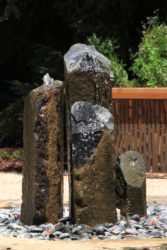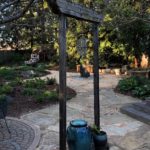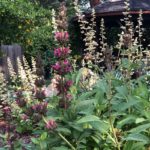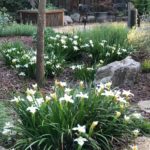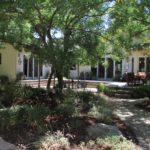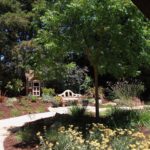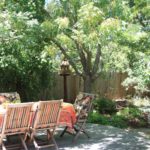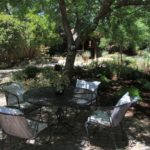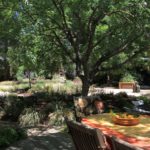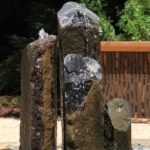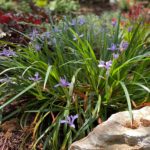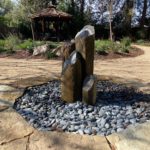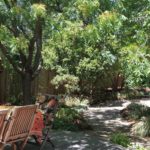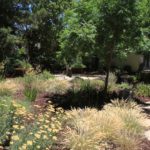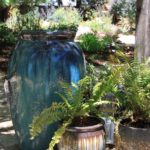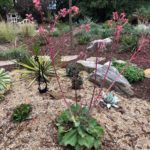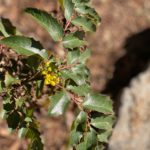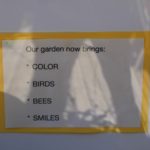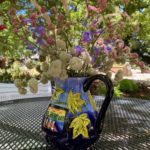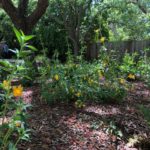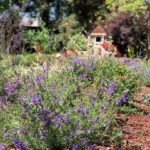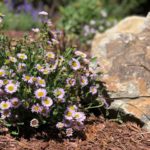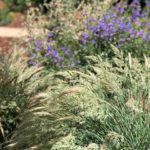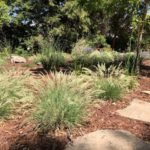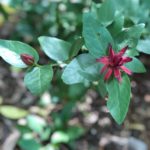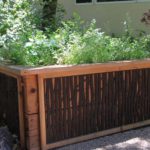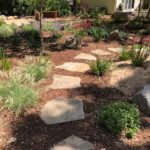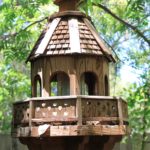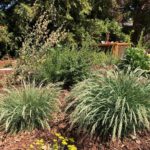Lot size: 8,500 sq. ft. back garden, 85% native
Garden Age:
Years on the Bringing Back the Natives Garden Tour: 2
Showcase Feature
Built in 1980, Carol and Don’s garden was designed to look like gardens did forty years ago; trees were planted around a large lawn, and the fence was lined with non-native shrubs. Carol’s interest in native plants grew when her talented daughter, landscape architect Kat Weiss, owner of Kat Weiss Landscape Design, introduced her to the beauty of native plant gardens, and also the concept that native plants would bring more birds and butterflies to the garden. The recent drought years, and realization that water was too precious to be poured on lawns, pushed Carol over the edge, and she knew the lawn had to go. She also wanted a beautiful garden. “We got color, and so much more,” Carol said, “Now instead of looking out on a sea of lawn, we see pink and cream coral bells, iridescent purple-blue foothill penstemon, and soft green Mendocino grasses. The birds love the basalt fountain and the bees have found us. The change is dramatic. We look forward to watching our beautiful new garden mature and our water bill decrease.”
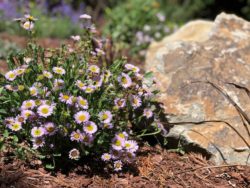 In the fall of 2020 parts of the lawn were dug up and became large mounds that provide both visual interest and the drainage that many natives need. Other areas of the lawn were sheet mulched. Three decomposed Ginger granite paths wend through the garden, leading one past a pondless, flagstone-lined basalt rock fountain, which delights the birds, a playhouse that delights children, and a gazebo, garden benches, and spacious deck that invite bipedal visitors of all ages to drop down and rest. Locally available Calistoga boulders line parts of the path and are also scattered throughout the garden, creating a natural look to the garden, and providing places for lizards to sun themselves.
In the fall of 2020 parts of the lawn were dug up and became large mounds that provide both visual interest and the drainage that many natives need. Other areas of the lawn were sheet mulched. Three decomposed Ginger granite paths wend through the garden, leading one past a pondless, flagstone-lined basalt rock fountain, which delights the birds, a playhouse that delights children, and a gazebo, garden benches, and spacious deck that invite bipedal visitors of all ages to drop down and rest. Locally available Calistoga boulders line parts of the path and are also scattered throughout the garden, creating a natural look to the garden, and providing places for lizards to sun themselves.
The garden contains a number of keystone species—plants upon which our local butterflies and moths can lay their eggs. These include fourteen manzanitas and eight California lilac, which, in addition to being terrific plants for wildlife, provide structure and greenery throughout the year. Additional keystone species in the garden are currants and buckwheats.
Other Garden Attractions
• The new plants are watered with drip irrigation. Water will be reduced when the plants are established.
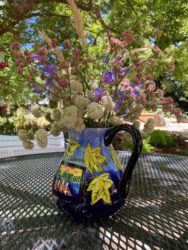 Gardening for Wildlife
Gardening for Wildlife
Plants are left to go to seed, providing food for birds long after the blossoms have gone, and leaves are left on the mounds to compost and build soil. A dozen narrowleaf milkweed plants were included in the garden as milkweed is the only plant on which the monarch butterfly can lay its eggs. The diversity of native plants, from tall redbuds and red twig dogwoods to lower growing perennials, such as sticky monkeyflower, penstemon, fuchsia and coyote mint, have attracted a plethora of birds and bees. Hummingbirds and doves nest in the garden, finches glean seeds from spent dried flower head, phoebes perch in the trees, and a Cooper’s hawk watches it all from above. “The bird songs are lovely to hear” reports Carol, “and the garden is so beautiful; we love our new garden!”
Video of Carol and Don’s garden
Still have that 80’s lawn surrounded by non-native plantings? Sheet mulch, and plant a new California native garden.


